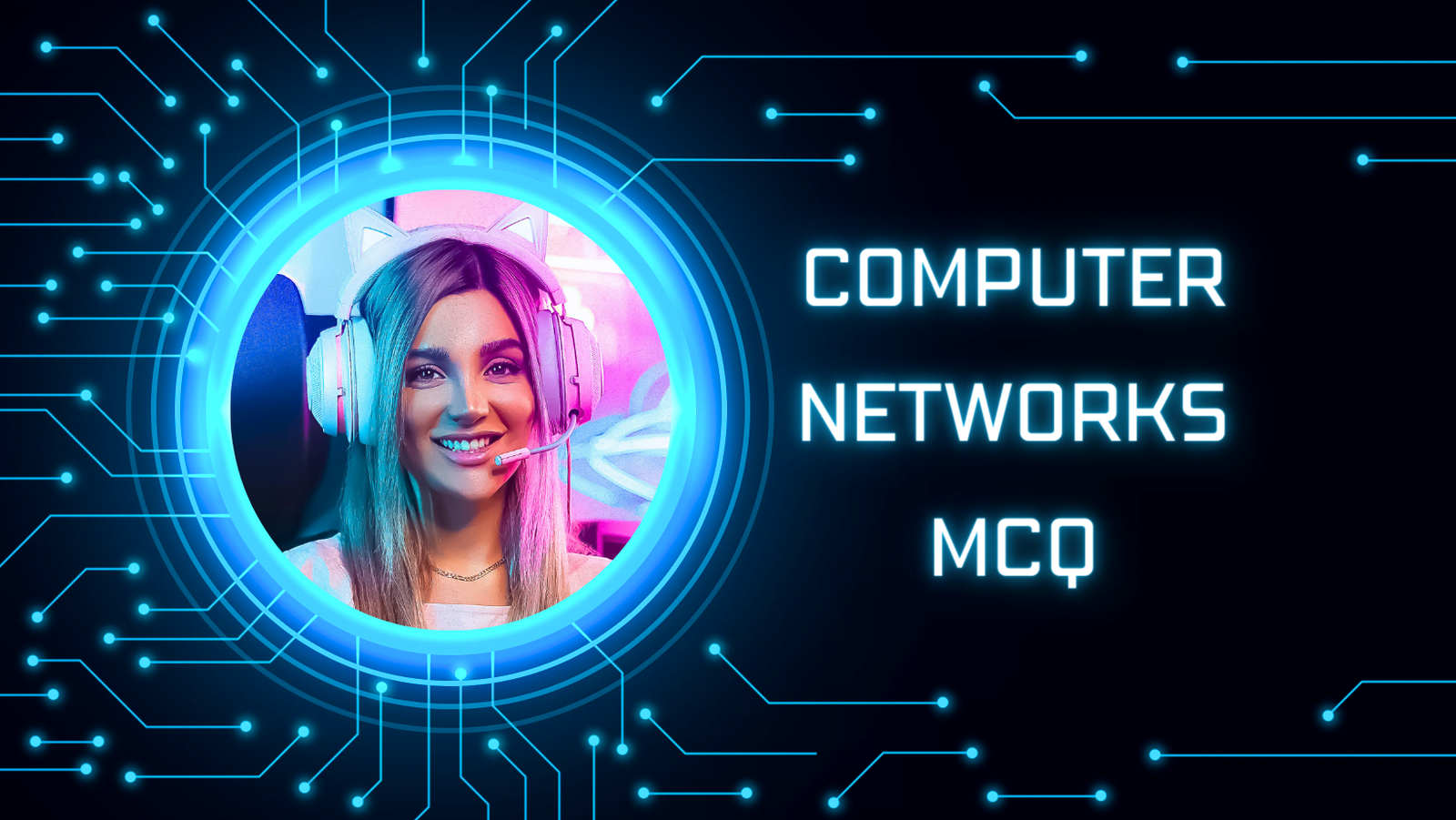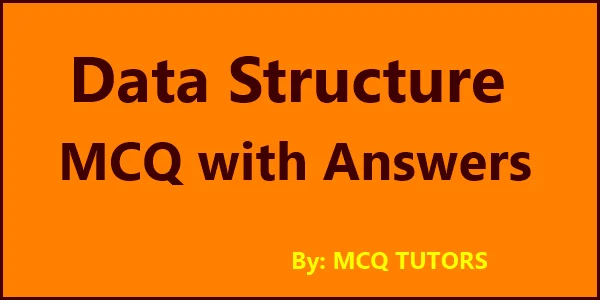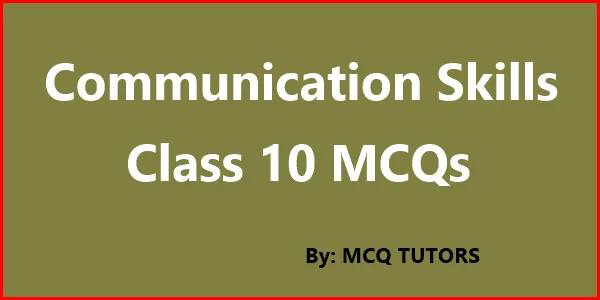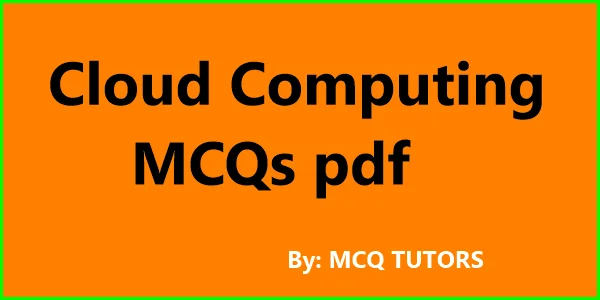Looking for Computer Networks MCQ Questions and Answers? Prepare for success with our expertly crafted practice questions for all levels.
This article provides you with a valuable resource – Computer Network MCQ Quiz Questions with Answers doc and PDF download – that can help you test your knowledge and gain insights into various aspects of computer networking.
It covers Ethernet, TCP/IP protocol suite, routing protocols, WAN technologies, etc.
Computer Network MCQ with answers Pdf download
1. In fibre optics, the signal source is ___ waves.
a) light
b) radio
c) infrared
d) very low frequency
Answer: (a) Fiber optics use light waves as the signal source for transmitting data. Light signals are generated and sent through the fiber-optic cables to carry information over long distances.
2. The ___ layer is responsible for node-to-node packet delivery.
a) session
b) network
c) physical
d) data link
Answer: (d) The data link layer is responsible for node-to-node packet delivery in a network. It provides error-free transfer of data frames between adjacent nodes over a physical link.
3. The speed mismatch between the sender and the receiver is called ___.
a) error control
b speed error
c flow control
d transmission control
Answer: (c) Flow control refers to the techniques used to manage the speed mismatch between the sender and receiver in a communication system. It ensures that the sender does not overwhelm the receiver with data and helps in maintaining a steady and efficient data transfer rate.
4. FTP runs exclusively over ___.
a) HTTP
b) TCP
c) SMTP
d) HTML
Answer: (b) FTP (File Transfer Protocol) runs exclusively over TCP (Transmission Control Protocol). TCP offers reliable and ordered delivery of data packets, which is essential for file transfer operations performed by FTP
5. BSC is developed by ___.
a) Motorola
b) IBM
c) Nokia
d) Toshiba
Answer: (b) BSC (Binary Synchronous Communication) was developed by IBM. It is a protocol used for serial communication between mainframe computers and peripheral devices.
6. Which of the following primarily uses guided media?
a) cellular telephone system
b) local telephone system
c) satellite communications
d) radio broadcasting
Answer: (b) The local telephone system primarily uses guided media, such as copper wires or fiber-optic cables, for communication. Guided media provide a physical path for transmitting signals and are commonly used for wired communication systems.
7. When discussing unguided media, we usually refer to ___.
a) metallic wires
b) nonmetallic wires
c) the atmosphere
d) None of the above
Answer: (c) Unguided media refers to wireless communication channels that do not rely on physical cables or wires. Instead, they utilize the atmosphere as a medium for transmitting signals, such as radio waves or microwave signals.
8. This is the ability to increase system performance gradually as the workload grows just by adding processors.
a) multipliability
b) inheritance
c) scalability
d) vectorization
Answer: (c) Scalability refers to the ability of a system to handle increasing workloads and grow in performance by adding resources, such as processors, without causing a significant decline in performance. It allows for efficient expansion and adaptability of the system.
9. PSTN represents ___.
a) private switched transmission network
b) public switched telephone network
c) private switched telephone network
d) public switched transmission network
Answer: (b) PSTN (Public Switched Telephone Network) is a global telephone network that uses circuit-switched technology to provide telephone communication services to the public. It is the traditional landline telephone system.
10. SMTP refers to ___.
a) Simple mail transfer protocol
b) Small mail transfer protocol
c) Simple mass transfer protocol
d) Small mail transfer protocol
Answer: (a) SMTP, stand for Simple Mail Transfer Protocol, serves as a widely accepted protocol utilized for the transmission and reception of email messages via the Internet. It is responsible for the transmission of emails between mail servers.
11. Class A, Class B, and Class C together are referred to as ___ addressing or primary address class if the IP.
a) classful
b) eventful
c) graded
d) ranked
Answer: (a) Class A, Class B, and Class C are the three primary address classes in the IPv4 addressing scheme. Together, they are referred to as classful addressing, which defines the range and format of IP addresses within each class.
12. ___ overcame the registered number issue by assigning each organization one network number from the IPv4 address space.
a) Tracking
b) Subnetting
c) Packeting
d) Switching
Answer: (b) Subnetting is a technique used in IP networking to divide a single network into multiple smaller subnetworks or subnets. It helps overcome the limited availability of registered network numbers by assigning a portion of the network address space to each organization.
13. Equipment that controls the physical and electrical termination of the ISDN at the user’s premises is called ___.
a) NT1
b) NT2
c) NT3
d) NT4
Answer: (a) NT1 (Network Termination 1) is the equipment that controls the physical and electrical termination of the ISDN (Integrated Services Digital Network) at the user’s premises. It acts as an interface between the user’s equipment and the ISDN network.
14. A data channel contains ___.
a) control information
b) management information
c) miscellaneous functions
d) user data/information
Answer: (d) A data channel carries user data or information in a communication system. It is responsible for transmitting the actual data being communicated between the sender and the receiver.
15. QOS represents ___.
a) Quality of System
b) Quality of Service
c) Queue of System
d) Queue of Service
Answer: (b) QOS (Quality of Service) refers to the performance characteristics and reliability of a network or communication system. It encompasses various aspects, such as bandwidth, latency, error rate, and prioritization of different types of traffic.
16. ISDN is an acronym for ___.
a) Information Services for Digital Networks
b) Internetwork System for Data Networks
c) Integrated Services Digital Networks
d) Integrated Signals Digital Network
Answer: (c) ISDN (Integrated Services Digital Network) is a telecommunications standard that enables the transmission of voice, video, and data over digital lines. It provides a set of services and protocols for efficient and reliable communication.
17. Data rate depends on three factors
a) Bandwidth available
b) Level of the signals we use
c) Quality of the channel
d) All of the above
Answer: (d) The data rate in a communication system depends on the available bandwidth, the level of the signals used, and the quality of the channel. These factors collectively determine the maximum achievable data rate.
18. Which layer is not really a layer?
a) Host of the network
b) Network to host
c) Application to presentation
d) None
Answer: (a) The “Host of the network” is not a layer in the OSI (Open Systems Interconnection) model or any other networking model. The OSI model consists of seven layers – Data Link, Physical, Network, Transport, Session, Presentation, and Application.
19. Reference point ___ is the specification for connecting NT1 with NT2.
a) R
b) S
c) T
d) U
Answer: (c) Reference point T is the specification for connecting the NT1 (Network Termination 1) equipment with the NT2 (Network Termination 2) equipment in an ISDN (Integrated Services Digital Network) connection. It defines the interface and signaling protocols between these two components.
20. The radio communication spectrum is divided into bands based on ___.
a) amplitude
b) frequency
c) cost and hardware
d) transmission medium
Answer: (b) The radio communication spectrum is divided into bands based on frequency. Each band represents a range of frequencies allocated for specific types of communication, such as AM radio, FM radio, television, mobile communications, and more.
21. Which international agency is concerned with standards in science and technology?
a) ISO
b) OSI
c) EIA
d) ANSI
Answer: (a) ISO (International Organization for Standardization) is an international agency that develops and publishes standards in various fields, including science and technology. It promotes global standardization to ensure compatibility, interoperability, and quality in products and services.
22. ___ blocks are identified using syntax similar to that of IPv4 addresses: a four-part dotted – decimal address following by a slash, then a number from 0 to 32 : A)B)C)D/N.
a) IPv4 CICR
b) IPv4 MIDR
c) IPv4 CIMR
d) IPv4 CIDR
Answer: (d) CIDR blocks for IPv4 (Classless Inter-Domain Routing) are recognized by employing a syntax akin to that of IPv4 addresses. It consists of a four-part dotted-decimal address, followed by a slash and a number from 0 to 32, representing the network prefix length.
23. The term “email” applies both to the Internet email system based on the ___ and to ___, allowing users within one organization to email each other.
a) FTP, Intranet Systems
b) SMTP, Intranet Systems
c) FTP, Internet Systems
d) SMTP, Internet Systems
Answer: (b) The term “email” applies both to the Internet email system based on the SMTP (Simple Mail Transfer Protocol) and to Intranet Systems, which allow users within one organization to email each other. SMTP is responsible for the transmission of email messages over the Internet.
24. Which agency created standards for telephone communications (V series) and for network interfaces and public networks (X series)?
a) ATT
b) ITU-T
c) ANSI
d) ISO
Answer: (b) ITU-T (International Telecommunication Union – Telecommunication Standardization Sector) is the agency responsible for creating standards for telephone communications (V series) and for network interfaces and public networks (X series). It is a specialized agency of the United Nations.
25. ___ CSMA is less greedy whereas ___ CSMA is selfish.
a) Non-persistent, 1-persistent
b) 1-persistent, p-persistent
c) p-persistent, 1-persistent
d) 1-persistent, non-persistent
Answer: (a) Non-persistent CSMA (Carrier Sense Multiple Access) is less greedy because it waits for a random period of time before reattempting transmission after detecting a collision. 1-persistent CSMA is considered selfish because it continually attempts transmission even if a collision occurs, potentially causing more collisions in the process.
26. The BRI is composed of ___.
a) two B channels
b) one H channel
c) one D channel
d) a and c
Answer: (d) BRI (Basic Rate Interface) is a type of ISDN (Integrated Services Digital Network) connection that is composed of two B channels and one D channel. The B channels carry user data or voice, while the D channel is used for signaling and control information.
27. IP Packet is a ___ and ___ based model.
a) connectionless, network
b) connection, network
c) connectionless, datagram
d) connection, datagram
Answer: (c) An IP (Internet Protocol) packet is a unit of data transmitted over an IP-based network. It is part of a connectionless network model, where each packet is treated independently and follows the datagram delivery model. IP packets are routed based on their destination IP addresses.
28. ___ are special-interest groups that quickly test, evaluate, and standardize new technologies.
a) Forums
b) Regulatory agencies
c) Standards organizations
d) All of the above
Answer: (a) Forums are special-interest groups or organizations that quickly test, evaluate, and standardize new technologies. They bring together industry experts, stakeholders, and interested parties to collaborate and develop standards or best practices for specific areas of technology.
29. When the angle of refraction is ___, the angle of incidence, the light beam moves from a denser to a less dense medium.
a) more than
b) less than
c) equal to
d) none of the above.
Answer: (a) When the angle of refraction is more than the angle of incidence, the light beam moves from a denser medium to a less dense medium. This phenomenon is known as refraction and occurs due to the change in the speed of light as it passes through different materials.
30. The current design practice for downlinks is to use a minimum elevation angle of about ___ degrees to ___ degrees depending on the frequency.
a) 45, 90
b) 40, 60
c) 10, 35
d) 5, 20
Answer: (d) The current design practice for downlinks, such as satellite communications, is to use a minimum elevation angle of about 5 degrees to 20 degrees, depending on the frequency. This angle ensures better signal reception and reduces interference from the Earth’s atmosphere.
31. The ALOHA network was created at the University of ___ in 1970 under the leadership of ___.
a) Hawaii, John Abramson
b) Texas, John Abramson
c) Texas, Norman Abramson
d) Hawaii, Norman Abramson
Answer: (d) The ALOHA network was one of the earliest computer networks and played a significant role in the development of packet-switched communication protocols.
32. The term used to describe the way in which computers are connected to the network.
a) Logic
b) Technology
c) Topology
d) All of the above
Answer: (c) The term used to describe the way in which computers are connected to the network is topology. It refers to the physical or logical arrangement of devices, links, and nodes in a network.
33. FDM stands for
a) Fixed division multiplexing
b) First division multiplexing
c) Frequency division multiplexing
d) None
Answer: (c) FDM stands for Frequency Division Multiplexing. It is a technique used in telecommunications where multiple signals are combined for transmission over a single communication channel by allocating different frequency ranges to each signal.
34. FDDI stands for
a) Fixed distributed data interface
b) First division data interface
c) Fiber distributed data interface
d) None
Answer: (c) FDDI stands for Fiber Distributed Data Interface. It is a standard for transmitting data on optical fiber cables at a rate of 100 Mbps. It is commonly used for connecting local area networks (LANs) and provides high bandwidth and fault tolerance.
35. The ___ layer is responsible for resolving access to the shared media or resources.
a) physical
b) MAC sublayer
c) Network
d) Transport
Answer: (b) The MAC sublayer is responsible for resolving access to the shared media or resources. MAC represents Media Access Control and the OSI model is where it operates, specifically at the data link layer. It manages the access to the physical transmission medium and handles issues like contention and collision avoidance.
36. Coding can be divided into
a) Block coding
b) Convolution coding
c) Both of the above
d) None of the above
Answer: (c) Coding can be divided into two types: Block coding and Convolution coding. Block coding is a method of coding where a fixed number of data bits is mapped into a fixed number of coded bits, while convolution coding is a technique that uses shift registers and feedback to encode data into a continuous stream of coded bits.
37. Fiber-optic communication system uses.
a Simplex transmission
b half-duplex
c full-duplex
d None of the above
Answer: (b) Fiber-optic communication systems use full-duplex transmission. Full-duplex means that data can be transmitted in both directions simultaneously. In fiber-optic communication, signals can be transmitted and received over the same fiber at the same time, allowing for bidirectional communication.
38. Complex routing strategies can be, and are, often used in systems such as ___, ___, or ___, which are sometimes used as underlying technologies to support IP networks.
a) MPLS, ATM, or Frame Relay
b) CTLNS, ATM, or Slot
c) ATM, PDTN, or Slot
d) LAN, ATM, or Frame Relay
Answer: (a) Complex routing strategies can be, and often are, used in systems such as MPLS (Multiprotocol Label Switching), ATM (Asynchronous Transfer Mode), or Frame Relay. These are network technologies that provide advanced routing and switching capabilities and are commonly used as underlying technologies to support IP networks.
39. The concept of connected computers sharing resources is called ___.
a) Internetworking
b) Intranetworking
c) Networking
d) None of the above
Answer: (c) Networking allows computers to communicate with each other & share resources like, printers, files, and internet connections.
40. VPN stands for
a) Virtual Private Network
b) Visual private network
c) Virtual public network
d) Visual public network
Answer: (a) VPN stands for Virtual Private Network. A network connection that is secure and private is set up over a public network, like the internet.
41. IMP stands for
a) Internal message passing
b) Interface message passing
c) Internal message parsing
d) Interface message parsing
Answer: (b) IMP stands for Interface Message Passing. IMP is a technique used for communication between different components or layers of a computer system, where messages are passed between interfaces to exchange information.
42. Process to process delivery of the entire message is done by
a) Physical layer
b) Transport layer
c) Session layer
d) Presentation layer
Answer: (b) Process-to-process delivery of entire message is done by the Transport layer. The Transport layer in the OSI model is responsible for reliable end-to-end delivery of data between applications running on different hosts. It ensures that the entire message is delivered without errors or loss.
43. Dialog controller role is played by
a) Session layer
b) Application layer
c) Transport layer
d) Network layer
Answer: (a) The Dialog controller role is played by the Session layer. In the OSI model, the Session layer is accountable for initiating, controlling, and concluding sessions between applications. It controls the communication dialog between the two applications, including session establishment, synchronization, and session termination.
44. Syntax and semantics of the information exchanged between two systems are done by
a) Session layer
b) Application layer
c) Transport layer
d) Presentation layer
Answer: (d) The syntax and semantics of the information exchanged between 2 systems are done by the Presentation layer. It ensures that the information exchanged between systems is in a format that can be understood by both parties.
45. SDU stands for
a) Service data unit
b) Service digital unit
c) Session data unit
d) Session data unit
Answer: (a) SDU stands for Service Data Unit. It refers to the unit of data that is exchanged between entities at the same layer in a network protocol stack. In other words, it is the data unit that is passed from one layer to another within the same network entity.
46. PDU stands for
a) Power data unit
b) Protocol digital unit
c) Presentation data unit
d) Protocol data unit
Answer: (d) PDU stands for Protocol Data Unit. It refers to the unit of data that is exchanged between different layers in a network protocol stack. Each layer adds its own header information to the PDU received from the layer above it, creating a new PDU for the next layer.
47. Transmission lines suffer from the major problem
a) Attenuation distortion
b) Delay distortion
c) Noise
d) All of the above
Answer: (d) Transmission lines suffer from the major problem of Attenuation distortion, Delay distortion, and Noise. Attenuation distortion refers to the loss of signal strength over distance, Delay distortion refers to the distortion of the signal due to variations in propagation delay, and Noise refers to unwanted interference that affects the quality of the transmitted signal.
48. If the value of a signal changes over a very short period, its frequency is ___
a) Low
b) High
c) Average
d) Zero
Ans: b
Answer: (b) If the value of a signal changes over a very short period, its frequency is High. Frequency is a measure of how rapidly a signal changes or oscillates. If the signal changes rapidly, it has a high frequency.
49. CRC stands for
a) Cyclic redundancy codes
b) Code redundancy cycle
c) Critical redundancy cycle
d) None of the above
Answer: (a) CRC stands for Cyclic Redundancy Codes. It is an error-detecting code used in digital networks and storage systems. CRC calculates a short fixed-size value, known as the checksum, based on the data being transmitted. This checksum is then compared at the receiving end to check if any errors occurred during transmission.
50. In ___ type of service, no connection is established beforehand or afterwards.
a) Acknowledged connectionless service
b) Unacknowledged connectionless service
c) Acknowledged connection-oriented service
d) Unacknowledged connection-oriented service
Answer: (b) In Unacknowledged Connectionless Service, no connection is established beforehand or afterwards. It is a type of communication service where data packets are sent without any acknowledgement or guarantee of delivery. This service is commonly used in situations where a reliable and established connection is not required, such as broadcasting or multicasting data.
Advanced Computer Networks MCQ sample papers with answers
Computer Graphics MCQ online test with answers
Conclusion Points
Understanding the fundamentals of computer networks is essential for anyone working in the IT field. With this MCQ questions and answers guide, we hope you understand better concepts such as protocols, layers, topologies, and the TCP/IP model.
Thanks for reading our articles; if you like the post on basic networking mcq questions and answers pdf, Computer Networks MCQ Questions with Answers pdf download, please share on social media.




